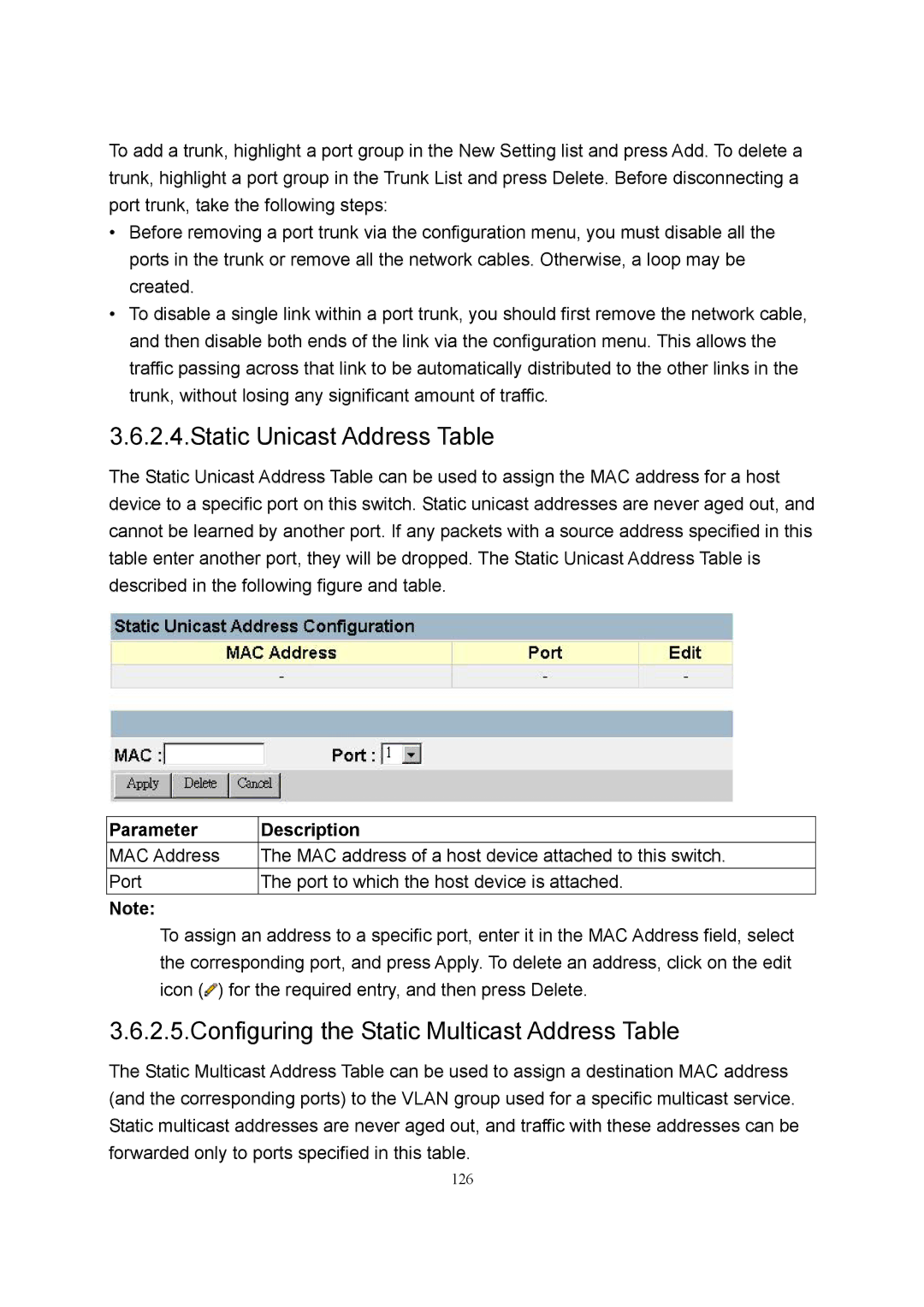
To add a trunk, highlight a port group in the New Setting list and press Add. To delete a trunk, highlight a port group in the Trunk List and press Delete. Before disconnecting a port trunk, take the following steps:
•Before removing a port trunk via the configuration menu, you must disable all the ports in the trunk or remove all the network cables. Otherwise, a loop may be created.
•To disable a single link within a port trunk, you should first remove the network cable, and then disable both ends of the link via the configuration menu. This allows the traffic passing across that link to be automatically distributed to the other links in the trunk, without losing any significant amount of traffic.
3.6.2.4.Static Unicast Address Table
The Static Unicast Address Table can be used to assign the MAC address for a host device to a specific port on this switch. Static unicast addresses are never aged out, and cannot be learned by another port. If any packets with a source address specified in this table enter another port, they will be dropped. The Static Unicast Address Table is described in the following figure and table.
Parameter | Description |
MAC Address | The MAC address of a host device attached to this switch. |
Port | The port to which the host device is attached. |
Note: |
|
To assign an address to a specific port, enter it in the MAC Address field, select the corresponding port, and press Apply. To delete an address, click on the edit icon (![]()
![]() ) for the required entry, and then press Delete.
) for the required entry, and then press Delete.
3.6.2.5.Configuring the Static Multicast Address Table
The Static Multicast Address Table can be used to assign a destination MAC address (and the corresponding ports) to the VLAN group used for a specific multicast service. Static multicast addresses are never aged out, and traffic with these addresses can be forwarded only to ports specified in this table.
126
